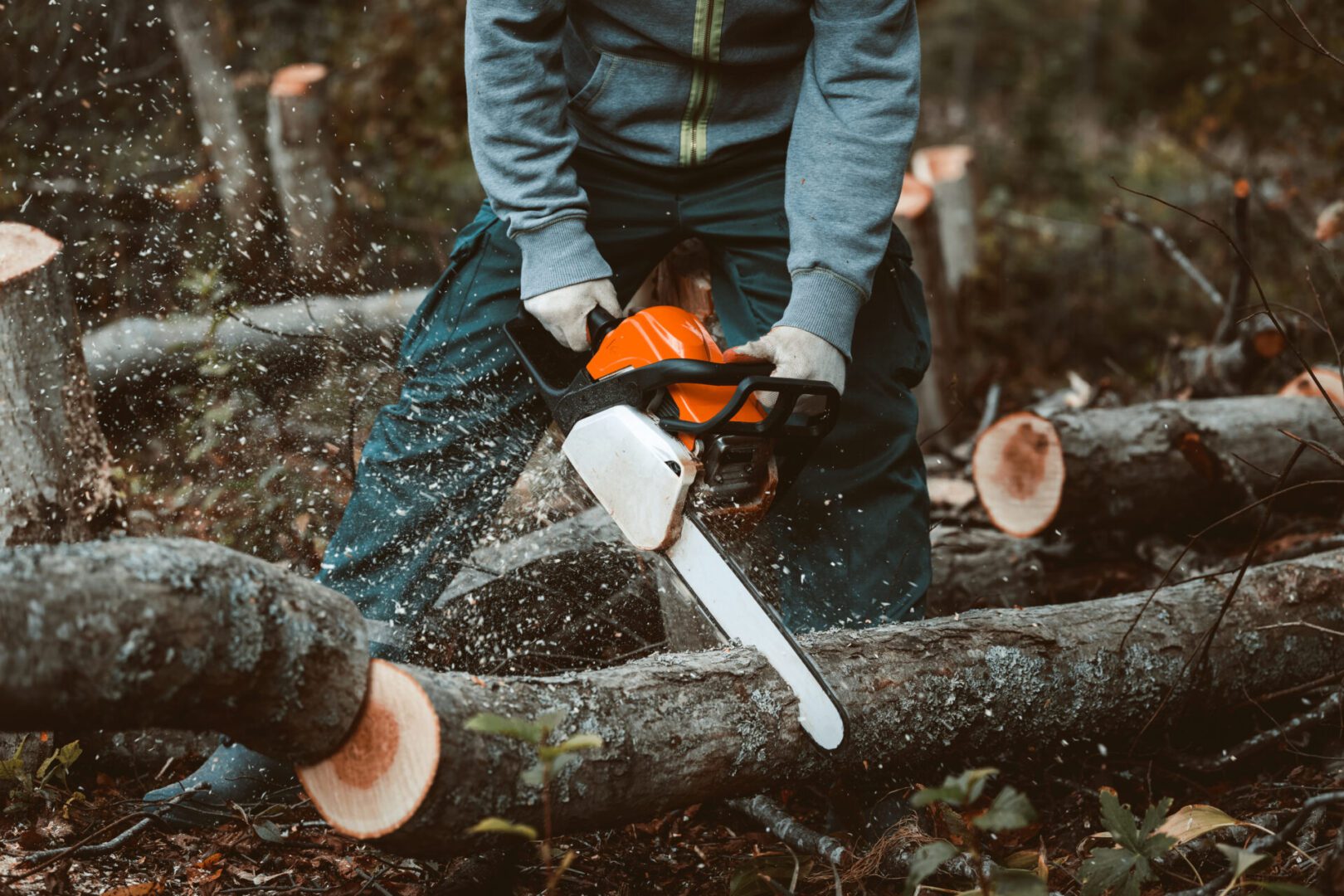Best Practices for Operating a Chainsaw

Chainsaws are immensely powerful tools that can tackle a variety of outside jobs—from trimming bushes to chopping up trees. Although you’re not legally required to obtain training for basic chainsaw use, you risk serious injury by not following all safety precautions. Follow the tips below to avoid being
one of the 36,000 people who end up in emergency rooms every year due to chainsaw injuries.
Get proper training:
If this is your first time picking up the tool, it’s smart to take an online or in-person chainsaw safety course that is approved by OSHA. (It never hurts to refresh your knowledge, either). If you’re renting a chainsaw for a one-time job from a hardware or home improvement store, you should ask an employee for any information that may be specific to your model. Have them review safety guidelines with you before using the chainsaw. Always opt for a reduced kickback saw chain when possible. Although these can slow down your work pace minimally, they are considerably safer.Remember your safety gear:
Never use a chainsaw without the proper safety equipment. At minimum, you should have:- Face shield and goggles
- Head protection (helmet or hard hat)
- Earplugs or earmuffs
- Well-fitting, cut-resistant chaps
- Work gloves
- Steel-toed boots or shoes
Exercise caution while using your chainsaw:
Before you turn on the chainsaw, make sure everything is in proper working order. The chain should be sharp, and the oil tank (if there is one) should be filled. Be sure to transport the oil in an OSHA-approved container. When it’s time to turn on the chainsaw, stay at least 10 feet away from the fuel area if working with a fuel-powered machine. Avoid using an electric chainsaw in environments that are wet and damp, and only use OSHA-compliant outdoor extension cords. Be sure that all possible tripping hazards are cleared from your path before turning on the chainsaw. Inspect any wood or other surfaces you may be sawing for nails or other small objects that could fly out and hurt you. Anyone not operating the machine should stay at least 15 feet away from the person who is. While felling, keep anyone with you at least two tree lengths away from what you’re cutting. Be wary of where the material you’re cutting is going to fall. Look upwards to anticipate any loose or dead branches that might fall on you. Beware the possible tension caused from branches that may spring back up and harm you after holding or cutting them.Stay alert:
As with any potentially dangerous piece of equipment, do not use a chainsaw if you are under the influence of drugs or alcohol or if you are particularly drowsy or tired. You should be on full alert to ensure the safety of yourself and everyone else on the site. When walking to and from sawing locations—especially over rough terrain—be sure to turn off the equipment and turn on the brake. If you’re traveling longer distances with the saw, fit the guide bar back on to mitigate the harm posed by potential trips. Never attempt to use a chainsaw while standing on unsteady or off-kilter surfaces, such as inclines, ladders, scaffolding and tree branches. If possible, work with at least one other person. In the event that you or another person gets hurt, it’s then easy to call 911 and transport the injured person to another location. If working alone is your only option, be sure to follow these steps to keep yourself as safe as possible:- Tell someone in advance where you will be working. If possible, share your location with them over text.
- Bring your phone with you, and make sure it’s charged. That way, you can call 911 if needed, and the person you alerted can track your location and find you in the case of an emergency.
- Keep your transport vehicle as close by as your setting allows.
Safety at home:
Generally, these usage tips are recommended for at-home chainsaw users:- Stand in boxing position to operate the machine. This means putting your non-dominant foot slightly in front of your dominant one, shoulder-width apart, and maintaining a slight bend in the knees. Your back will thank you the next day for choosing to bend down from your legs rather than leaning over while working in low, hard-to-get places.
- Don’t reach above shoulder level to cut anything. This is very risky and likely to cause injury.
- Avoid applying heavy pressure while you’re using the machine. Some light continued pressure is necessary to keep the chainsaw in place, but the point of the tool is to make your job easier—so use a steady hand and let the saw do most of the work.
- Tightly grip the handles with both hands—never use a chainsaw with only one. Wrap your fingers around the top and rear handles and hold your left thumb under the front handle to reduce your risk of kickback.
- Bring the saw up to its full speed before you begin cutting any material.